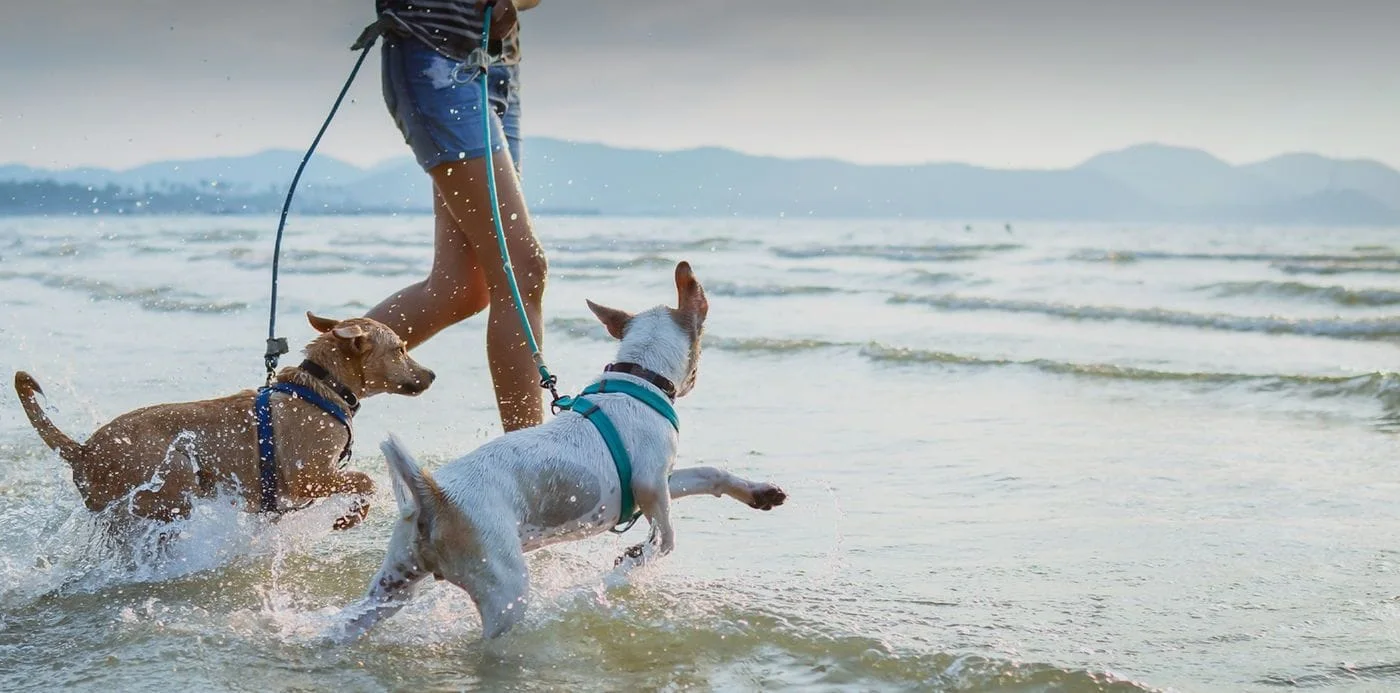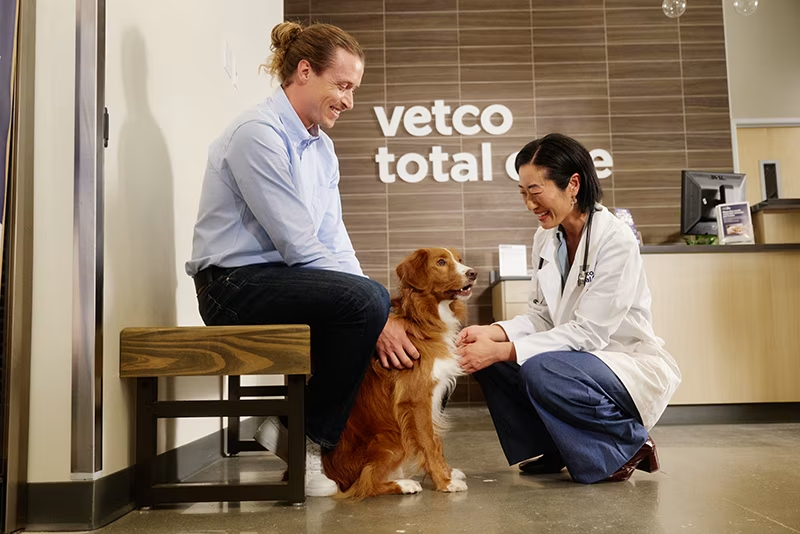Why Pet Rehab Is Essential: the Benefits of Vet Providers for Your Family pet's Recovery
Animal rehab is a necessary component of recuperation for pets facing injuries or specials needs. Veterinary services give crucial support through customized rehab strategies that resolve private needs. These strategies frequently include discomfort administration, physical treatment, and nutritional guidance. Comprehending the various elements of animal rehabilitation can brighten its value in enhancing recovery results. What certain advantages do these solutions use, and how can they change an animal's recovery trip?
Comprehending Pet Rehab
Pet rehabilitation encompasses a series of healing practices intended at recovering the wellness and functionality of injured or impaired animals. This area integrates different methods, consisting of physical treatment, hydrotherapy, and work therapy, tailored to satisfy the particular requirements of each animal. Rehab professionals evaluate an animal's condition, establishing personalized treatment strategies that might include exercises to reinforce muscular tissues, improve flexibility, and enhance general health. The procedure not only concentrates on physical recuperation however likewise addresses psychological and behavior aspects. Pets often experience tension and anxiousness complying with an injury, making psychological health and wellness considerations necessary in rehab. By developing a supportive atmosphere, therapists can assist animals regain their confidence and adapt to their new scenarios. Via regular sessions, pets can experience considerable improvements, inevitably resulting in a far better lifestyle. Generally, understanding pet rehab highlights its importance in advertising healing and boosting the bond in between pet dogs and their owners.
The Duty of Pain Administration in Recovery
Exactly how necessary is effective pain management in the recuperation of damaged pets? It plays an essential role in promoting recovery and improving the general health of pets. Proper pain administration not only eases discomfort yet also advertises movement, allowing animals to take part in rehabilitation activities essential for recovery. When discomfort is effectively managed, animals often tend to react favorably to treatment, resulting in quicker rehabilitation outcomes.Veterinarians make use of numerous methods to assess and deal with discomfort, consisting of drugs, acupuncture, and different therapies. By customizing discomfort monitoring approaches to the individual demands of each pet, veterinarians can guarantee that pet dogs stay calm and participating throughout their recovery journey. Furthermore, minimizing discomfort helps in reducing tension, which can inhibit healing and extend recovery times. To sum up, efficient discomfort administration is vital for enhancing the recuperation process and boosting the quality of life for injured animals.
Physical Therapy Methods for Pet Dogs
Many physical treatment techniques are readily available to aid in the recovery of pets recouping from injuries or surgical procedures (tplo surgery for dogs). These methods can enhance wheelchair, alleviate pain, and promote recovery. Therapeutic exercises, for instance, assistance reinforce muscle mass and boost joint feature, permitting family pets to reclaim their physical abilities slowly. Hands-on therapy, which includes massage and mobilization, can reduce tension and improve blood circulation, adding to a quicker recovery.Other methods such as passive variety of motion exercises encourage joint adaptability and decrease stiffness. Furthermore, electric stimulation therapy might be employed to boost nerves and muscular tissues, advertising healing and discomfort relief.Veterinary experts often tailor these techniques to each animal's details needs, making certain a comprehensive rehab strategy. By applying these physical therapy approaches, animals can experience better lifestyle and an extra successful recovery from their conditions. The integration of these practices right into rehab programs is important for ideal recuperation end results
Advantages of Hydrotherapy for Recovery
Hydrotherapy provides considerable benefits in pet rehabilitation, specifically in boosting movement. This water-based therapy advertises discomfort alleviation while offering convenience to injured or recuperating pet dogs. Furthermore, it helps with strength-building exercises that add to overall physical recuperation.
Improved Mobility Renovation
As pets recuperate from injuries or surgeries, enhanced movement usually ends up being a main objective of their recovery. Hydrotherapy serves as a beneficial tool in achieving this objective. Through water-based exercises, animals can involve in low-impact motions that promote joint movement and strengthen muscular tissues without the tension of weight-bearing activities. The buoyancy of water sustains their bodies, enabling for raised variety of activity and movement improvement. In addition, hydrotherapy motivates far better balance and coordination, which are necessary for bring back normal motion patterns. Normal sessions can bring about considerable development in an animal's physical capacities, eventually enhancing their quality of life. This technique not just aids in recuperation yet also promotes a more energetic and fulfilling lifestyle post-rehabilitation.
Discomfort Relief and Comfort

Remedy for discomfort is an important aspect of animal rehab, and hydrotherapy greatly adds to this procedure. By using water's buoyancy, hydrotherapy decreases joint anxiety and relieves pain throughout motion. This therapeutic method offers a comforting setting where animals can take part in gentle workouts without the complete weight of their bodies affecting their recovery. The warm water stimulates blood flow, promoting recovery while also encouraging relaxation. In addition, hydrotherapy sessions can be customized to satisfy the particular needs of the animal, making certain excellent comfort. As pet dogs experience minimized pain and increased convenience levels, their overall desire to take part in rehab tasks usually boosts, leading to a more reliable recuperation journey. As a result, hydrotherapy acts as an important tool in improving pain relief and comfort throughout recovery.
Stamina Building Workouts
Strength-building exercises play a crucial role in the recovery procedure, with hydrotherapy offering one-of-a-kind advantages. This kind of therapy makes use of water resistance to boost muscular tissue stamina without putting excessive stress on the joints. The buoyancy of water sustains the pet's weight, enabling more secure activity and increased series of movement. Additionally, hydrotherapy can improve cardio health and advertise overall health and fitness, helping in faster recovery from injuries or surgical procedures. The controlled environment additionally decreases the threat of reinjury, making it a perfect option for pet dogs calling for rehab. Routine hydrotherapy sessions can bring about recognizable renovations in wheelchair, stamina, and endurance, ultimately enhancing the animal's lifestyle and capacity to return to typical activities.
Value of Custom-made Rehabilitation Strategies
Custom-made rehab plans are essential for resolving the one-of-a-kind requirements of each pet, guaranteeing individualized therapy approaches. These strategies permit for effective development tracking and required modifications, promoting optimal recovery results. Furthermore, a holistic approach can boost the overall wellness of the pet, advertising a more extensive recovery experience.
Individualized Therapy Approaches
While many recovery programs take on a one-size-fits-all approach, the special demands of each animal demand customized treatment plans for excellent healing. Custom-made rehabilitation plans consider different variables, consisting of the animal's species, age, case history, and specific injuries or problems. By tailoring treatments, vets can resolve each pet's special challenges, maximizing the efficiency of the recovery process. Embellished strategies may incorporate various modalities such as physical therapy, hydrotherapy, and restorative workouts, making certain that the therapy straightens with the pet's capabilities and development. Furthermore, personalized methods promote a more powerful bond between the pet and the caregiver, advertising a much more engaging and supportive healing environment. Inevitably, customized treatment is necessary for accomplishing ideal possible end results in animal rehabilitation.
Progression Tracking and Adjustments

Holistic Healing Approaches
Holistic recovery approaches are necessary for effective pet rehab, as they emphasize the importance of customized therapy strategies tailored to each pet's details demands. This strategy takes into consideration the physical, emotional, and environmental factors impacting recuperation. Custom-made rehabilitation plans may consist of a mix of physical treatment, dietary counseling, and behavior alterations. By resolving these varied elements, vets can enhance the overall wellness of the pet and promote a faster healing. Such tailored techniques help with a much deeper understanding of the pet's special difficulties, leading to a lot more efficient treatments. Eventually, holistic healing methods not only boost physical health however also add to the pet's mental and emotional security, making sure a thorough rehabilitation experience.
The Influence of Nourishment on Recovery
Nourishment plays a necessary role in the healing procedure for fixing up pets, often figuring out the speed and performance of healing. A healthy diet plan provides the necessary nutrients that support tissue repair work, improve the body immune system, and improve total vitality. Healthy protein is particularly vital, as it helps in muscular tissue rebuilding and recuperation from injuries. Vital fatty acids, vitamins, and minerals also add to reducing swelling and promoting optimal mobile function.Veterinarians often emphasize the value of customized nutrition strategies, thinking about each animal's details demands, age, and health status. Correct hydration is just as crucial, as fluids assist in nutrient absorption and assistance in detoxing. By making certain that family pets receive ideal nutrition, caretakers can considerably boost their possibilities of a successful healing, leading to much better long-term health and wellness outcomes. Inevitably, nourishment works as a foundational component in the rehab trip, supporting pets in gaining here back stamina and resilience post-injury or illness.
Success Stories: Animals That Flourished After Rehabilitation
Effective rehabilitation stories abound, showcasing the resilience of animals that have overcome significant obstacles. Take, for example, Bella, a golden retriever who suffered serious injuries from a vehicle crash. With dedicated veterinary care and a detailed rehabilitation program, she reclaimed her flexibility and went back to her playful self, much to her proprietor's joy. Max, an elderly feline diagnosed with arthritis, experienced remarkable renovation through a mix of physical therapy and discomfort administration. His newly found dexterity allowed him to enjoy his favored sunbathing places again. One more inspiring case is that of Coco, a saved greyhound who conquered stress and anxiety through habits modification and socializing strategies, allowing her to thrive in her brand-new home. These success tales exhibit the transformative power of pet rehabilitation, stressing that with the best assistance, animals can not just recover but lead satisfying lives, enriching the bonds they share with their households.
Regularly Asked Questions
For how long Does the Recovery Refine Typically Take for Animals?
The rehab process for family pets generally varies based upon the injury or problem, ranging from a few weeks to numerous months. Private progress, therapy type, and dedication to workouts considerably affect the total duration of recuperation.
Exist Any Kind Of Risks Related To Animal Recovery?
Animal rehabilitation may lug dangers such as worsening of injuries, inappropriate methods bring about discomfort, or insufficient monitoring during recuperation. These aspects can hinder development and affect the overall performance of the recovery procedure.

Can All Pets Benefit From Rehab Solutions?
Not all pets might require rehabilitation, however lots of can profit considerably. Recovery solutions can improve movement, alleviate discomfort, and improve total well-being, particularly for those recuperating from injuries, surgical treatments, or chronic conditions.
Exactly How Can I Prepare My Family Pet for Recovery Procedure?

What Signs Show My Pet Demands Rehabilitation?
Indications showing a pet dog might need recovery include problem strolling, hopping, decreased activity levels, unwillingness to leap, or signs of pain. Observing these habits can motivate proprietors to seek professional analysis and therapy for their animals.